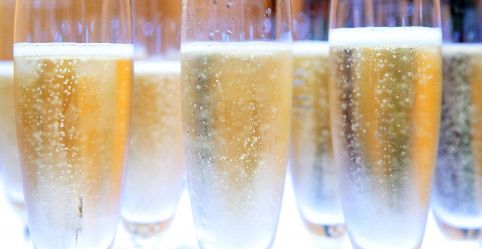Study: Tingle of Carbonation Is Tasty, Too

Fizzy beverages don't just tickle the tongue. They also rev up taste buds that can detect the drink's bubble-inducing carbon dioxide.
Though this discovery was made in mice, researchers say a rodent's sense of taste is similar to ours.
When a person, or mouse, devours a snack or downs a beverage, taste receptor cells on the tongue (which are clustered into taste buds) detect certain molecules in that food or drink. The receptor cells then send a message to the part of the brain involved in tasting.
Until recently, scientists had identified five taste-specific clusters of cells on the tongue: sweet, sour, salty, bitter and umami (savory). Recent research has suggested we can also taste calcium. We have a much broader taste palette, however, because much of the flavor of food comes from other senses such as touch and smell. In the new research, published this week in the journal Science, scientists reveal we might have a taste for carbon dioxide. Unlike other tastes, this one hijacks the goods from already-in-use taste receptors.
Here's how they figured out the fizz factor:
The team genetically shut down sets of taste receptor cells in mice, and then gave the rodents club soda or carbon dioxide gas. Mice lacking the sour cells showed no activity in the main nerve that sends messages from the tongue's taste cells to the brain, suggesting they didn't taste the carbonation.
With genetic screening, the researchers identified an enzyme attached to the mice's sour-sensing cells that orchestrates the whole process. Called carbonic anhydrase 4, the enzyme helps to break down carbon dioxide, producing among other things protons. These protons then jump-start the sour-sensing cells, which send a taste message to the brain. Mice without a working enzyme also showed less brain response to the carbon dioxide gas.
Sign up for the Live Science daily newsletter now
Get the world’s most fascinating discoveries delivered straight to your inbox.
As for why carbonated beverages don't taste sour, the researchers suggest the overall perception of carbonation comes from both the taste receptor cells and mechanoreceptive cells that get tickled by the physical bursting of bubbles on the tongue. The researchers speculate the brain interprets the sour cells' signal differently when accompanied by information from such mechanoreceptive cells.
Animals may have evolved a mechanism to detect carbon dioxide as a way to avoid rotten food, which ferments and releases the gas. In fact, past research suggested fruit flies can taste carbonation. That way, the pesky insects can discern whether a fruit is partially rotten (perfect from a fruit fly perspective) or too rotten.
- The Tongue Map: Tasteless Myth Debunked
- 10 Things You Didn't Know About You
- Why Does Soda Fizz?
Jeanna Bryner is managing editor of Scientific American. Previously she was editor in chief of Live Science and, prior to that, an editor at Scholastic's Science World magazine. Bryner has an English degree from Salisbury University, a master's degree in biogeochemistry and environmental sciences from the University of Maryland and a graduate science journalism degree from New York University. She has worked as a biologist in Florida, where she monitored wetlands and did field surveys for endangered species, including the gorgeous Florida Scrub Jay. She also received an ocean sciences journalism fellowship from the Woods Hole Oceanographic Institution. She is a firm believer that science is for everyone and that just about everything can be viewed through the lens of science.












